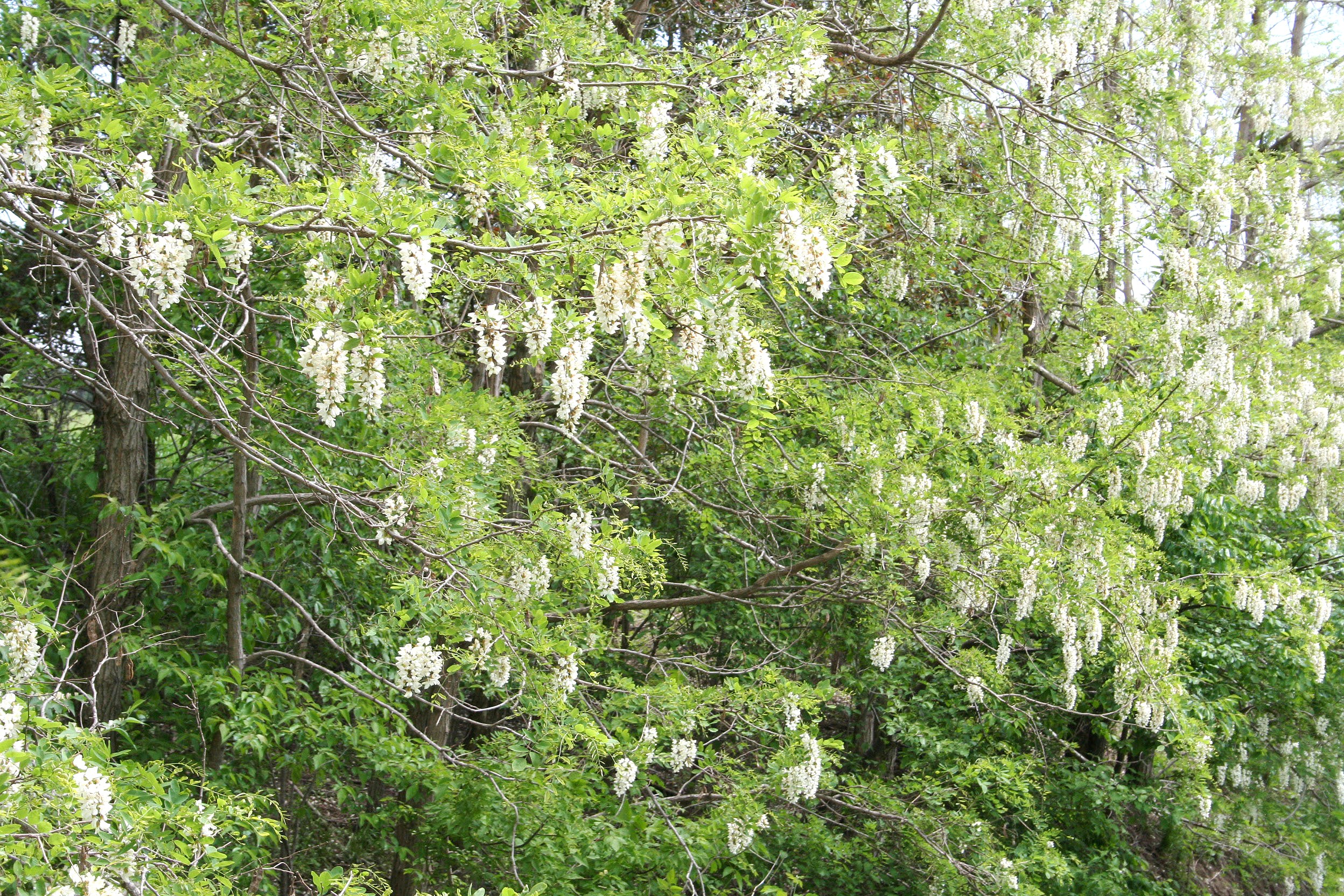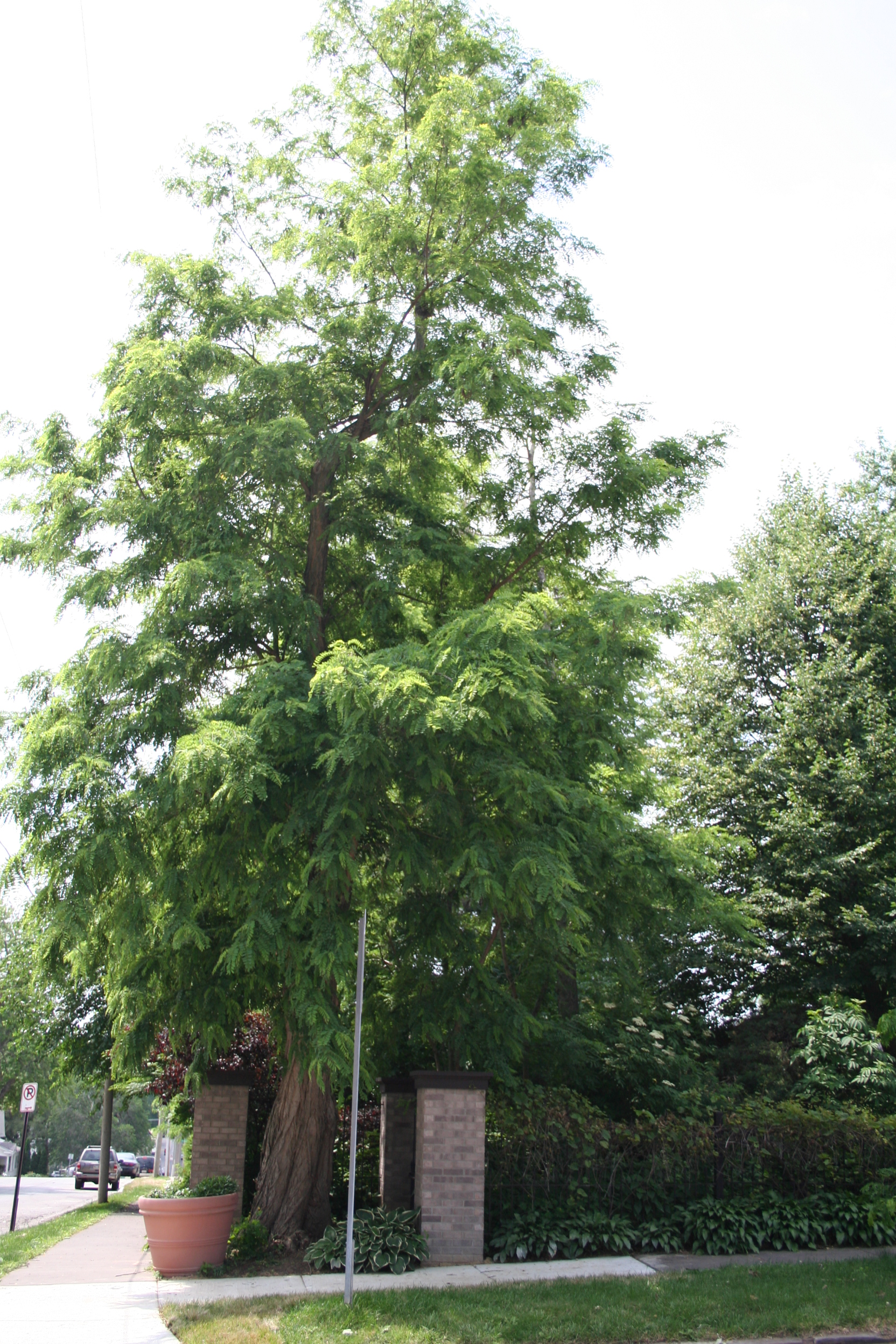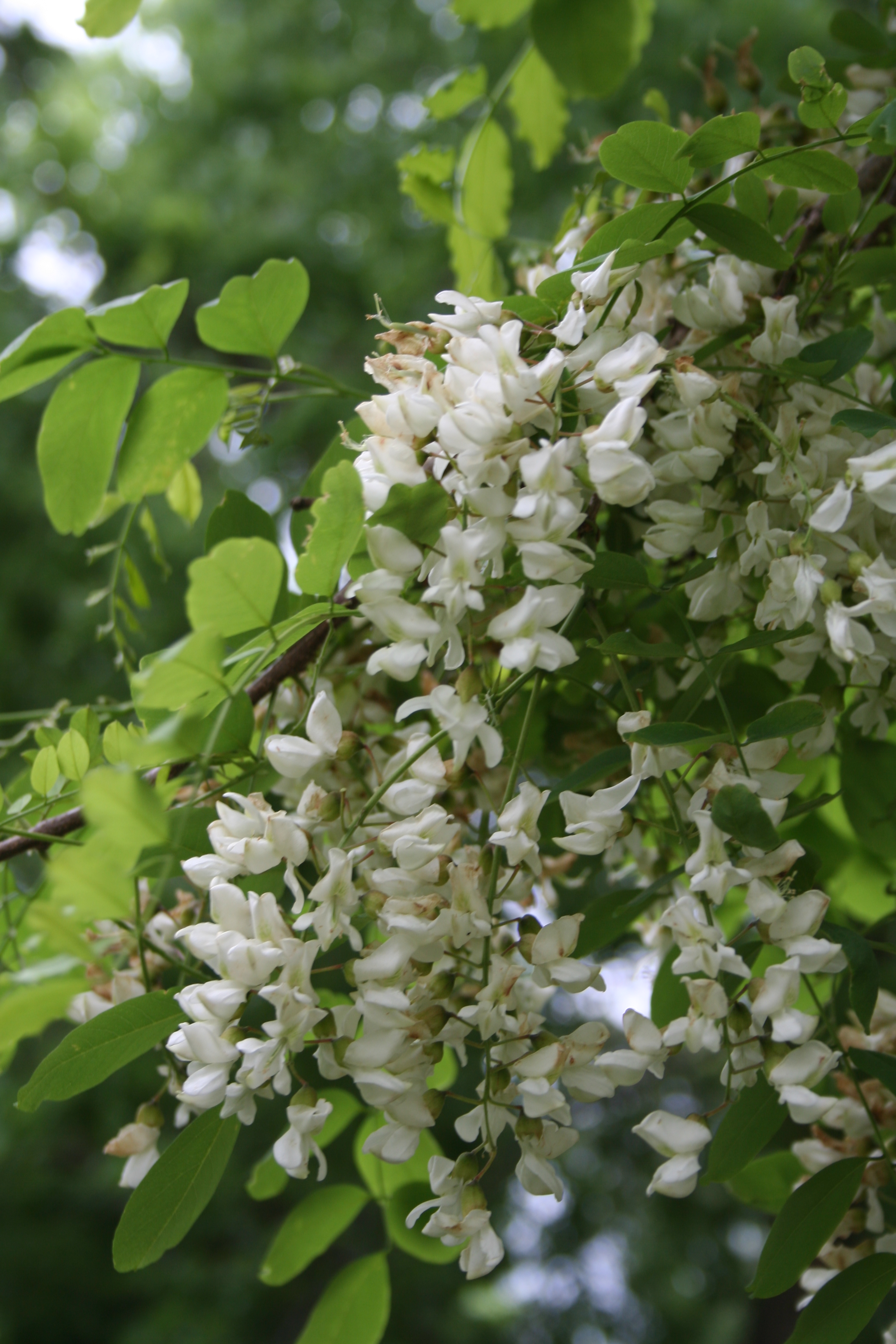Locust, Black
Robinia pseudoacacia, Deciduous
Black locust is one of the most adaptable and easy-to-grow trees for the urban landscape. Due to its showy aromatic flower, it has often been planted as an ornamental, but this practice should be discouraged due to the potential for spread by root suckers.

Where To Grow

Size at Maturity
| Tree Height | Tree Spread |
| 30-40' | 20-30' |
Tree Characteristics
Black locust has a shallow, aggressive root system. The bark of black locust is deeply furrowed and is dark reddish-brown to black in color. It has an alternate branching pattern, which creates a zigzag effect. A pair of sharp thorns grows at each node. They are ½ to ¾ inches long, and very stout. The pinnately compound leaves are 8 to 14 inches long, with 7 to 19 short-stalked leaflets. These dull green leaflets are ovoid or oval, 1 to 2 inches long, thin, scabrous above and pale below. The separate male and female plants have sweetly fragrant flowers that are creamy white with five petals (bean-like) arranged in a pyramidal spike. They usually bloom in May or June. Heavy seed production can be expected annually or biannually. The legume type seed is produced in a flat, brown to black pod, which is 2 to 4 inches long. There is an average of 25,500 seeds per pound. Although black locust is a good seed producer, its primary means of spread is by both rudimentary and adventitious root suckers.
Wildlife Benefits
The tree is a favorite of bees and is said to produce one of the best tasting kinds of honey. However, it has little other wildlife value.
Additional Considerations
Unfortunately, the tree is very prone to attack from the locust borer and as such seldom lives more than a few decades in the landscape. The hybrid cultivar ‘Purple Robe’ has striking, nearly purple flowers but is a borer magnet and destined to a very short life. It can also be a weedy tree with a suckering habit and a tendency to take over open ground.
Interesting Facts
The wood of black locust is very hard and durable making it desirable for fence posts and furniture, as well as firewood.
References
- Tips for planting success
- NRCS Plant Guide
- Developed by Justin Evertson, Kyle Martens, and Denise Wally

